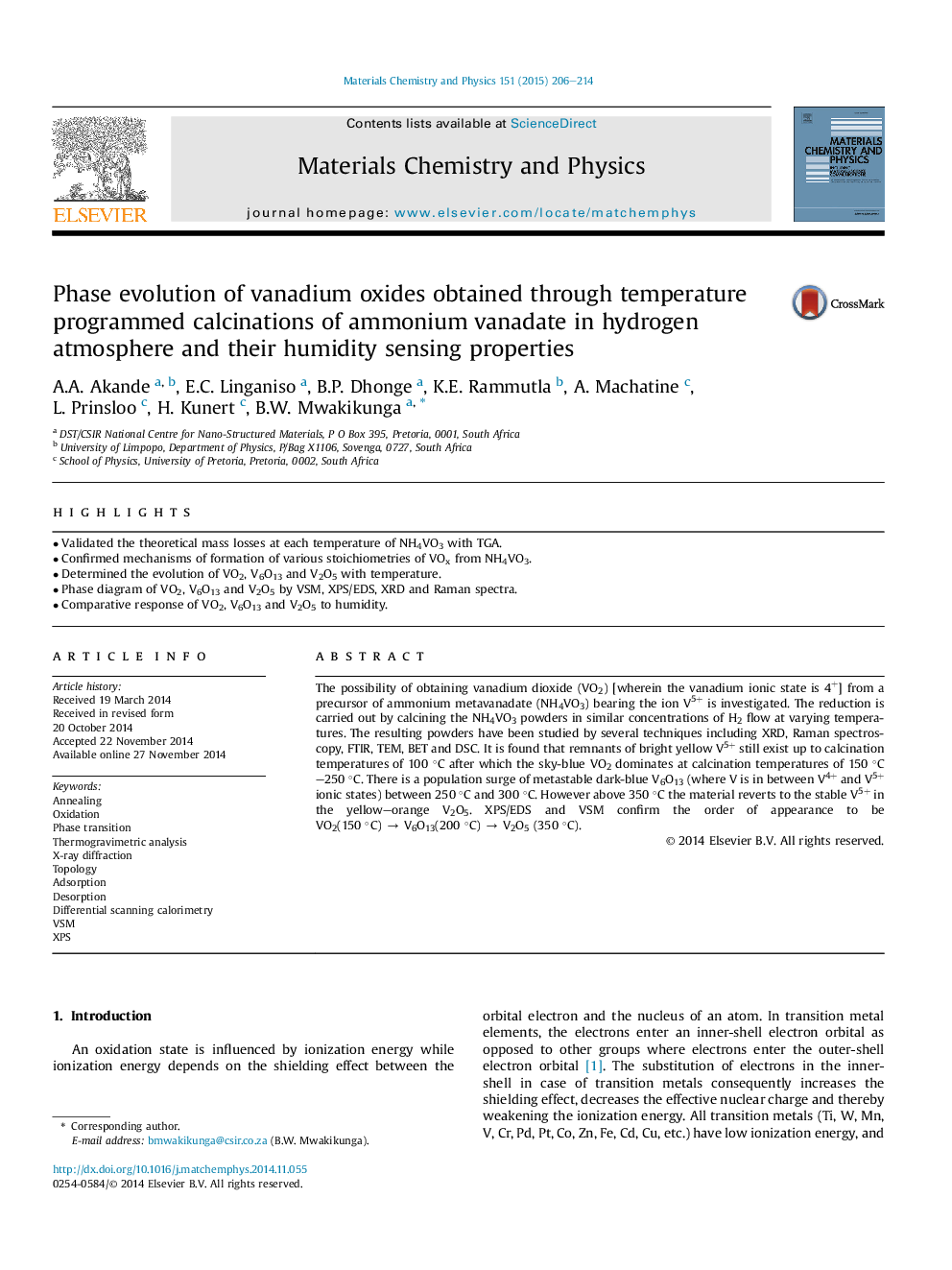| کد مقاله | کد نشریه | سال انتشار | مقاله انگلیسی | نسخه تمام متن |
|---|---|---|---|---|
| 1521623 | 1511812 | 2015 | 9 صفحه PDF | دانلود رایگان |
• Validated the theoretical mass losses at each temperature of NH4VO3 with TGA.
• Confirmed mechanisms of formation of various stoichiometries of VOx from NH4VO3.
• Determined the evolution of VO2, V6O13 and V2O5 with temperature.
• Phase diagram of VO2, V6O13 and V2O5 by VSM, XPS/EDS, XRD and Raman spectra.
• Comparative response of VO2, V6O13 and V2O5 to humidity.
The possibility of obtaining vanadium dioxide (VO2) [wherein the vanadium ionic state is 4+] from a precursor of ammonium metavanadate (NH4VO3) bearing the ion V5+ is investigated. The reduction is carried out by calcining the NH4VO3 powders in similar concentrations of H2 flow at varying temperatures. The resulting powders have been studied by several techniques including XRD, Raman spectroscopy, FTIR, TEM, BET and DSC. It is found that remnants of bright yellow V5+ still exist up to calcination temperatures of 100 °C after which the sky-blue VO2 dominates at calcination temperatures of 150 °C–250 °C. There is a population surge of metastable dark-blue V6O13 (where V is in between V4+ and V5+ ionic states) between 250 °C and 300 °C. However above 350 °C the material reverts to the stable V5+ in the yellow–orange V2O5. XPS/EDS and VSM confirm the order of appearance to be VO2(150 °C) → V6O13(200 °C) → V2O5 (350 °C).
Journal: Materials Chemistry and Physics - Volume 151, 1 February 2015, Pages 206–214
